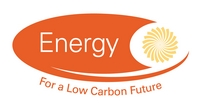Projects
Projects: Projects for Investigator |
||
| Reference Number | EP/F004672/1 | |
| Title | Fluidic control for turbulent drag reduction | |
| Status | Completed | |
| Energy Categories | Energy Efficiency(Transport) 100%; | |
| Research Types | Basic and strategic applied research 100% | |
| Science and Technology Fields | ENGINEERING AND TECHNOLOGY (General Engineering and Mineral & Mining Engineering) 100% | |
| UKERC Cross Cutting Characterisation | Not Cross-cutting 100% | |
| Principal Investigator |
Professor SI Chernyshenko No email address given Aeronautics Imperial College London |
|
| Award Type | Standard | |
| Funding Source | EPSRC | |
| Start Date | 01 October 2007 | |
| End Date | 30 September 2008 | |
| Duration | 12 months | |
| Total Grant Value | £195,372 | |
| Industrial Sectors | Aerospace; Defence and Marine | |
| Region | London | |
| Programme | Materials, Mechanical and Medical Eng | |
| Investigators | Principal Investigator | Professor SI Chernyshenko , Aeronautics, Imperial College London (99.997%) |
| Other Investigator | Professor SM Spearing , School of Engineering Sciences, University of Southampton (0.001%) Professor AJ Keane , School of Engineering Sciences, University of Southampton (0.001%) Professor IP (Ian ) Castro , School of Engineering Sciences, University of Southampton (0.001%) |
|
| Web Site | ||
| Objectives | ||
| Abstract | In principle, it is possible to cover an aircraft wing or ship hull with sensors and actuators and pass the signal from the sensors to a computer, which will control the actuators in such a way that overall fuel consumption is reduced. The Advisory Council for Aeronautics Research in Europe (ACARE) established a target of a 50% reduction in emissions by 2020. This implies a considerable reduction in turbulent friction drag within a very short time scale - flight tests should be conductednot later than 2012. The IUTAM Symposium on flow control and MEMS (Imperial College, 19 - 22.09.2006) showed that while there is steady progress in the area, if the current pace of research is maintained, in-flight testing of turbulent drag reduction by active control will be hard to achieve by 2012. Therefore, at the expense of a higher risk, state-of-the-art knowledge in turbulence drag reduction by active control has to be used "as is" without waiting for further progress, so asto develop programs which can lead to flight tests in 2012. This proposal presents such a program. We propose to develop an advanced "fluidic" material such that the variations of the wall shear stress will induce the wall suction and blowing such that it will lead to drag reduction | |
| Data | No related datasets |
|
| Projects | No related projects |
|
| Publications | No related publications |
|
| Added to Database | 31/10/07 | |



